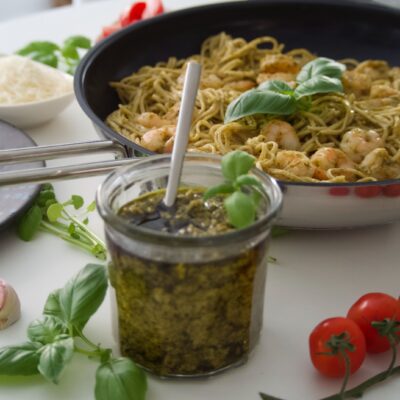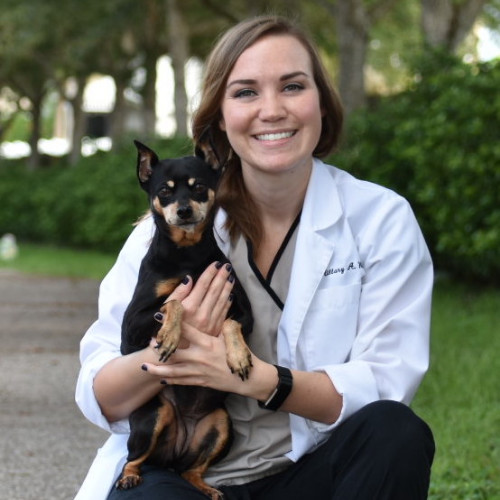No, it is advisable not to feed pesto to your dog. Even while basil, which is healthy for dogs, makes up the majority of pesto, it also contains garlic, which is known to be poisonous. Additionally, pesto contains cheese and oil, both of which can contribute to weight and health problems like vomiting and diarrhea.

Caution: This food is generally considered risky by the veterinary community. Dogs should not eat this food and should be monitored for adverse effects.
| Food Safety | Exercise caution, avoid large amounts |
|---|---|
| Nutritional Issues | high in fat due to pine nuts, olive oil, and parmesan cheese |
| Potential Risks | Obesity, salt poisoning, weight gain, gastric problems |
| Poisoning Symptoms | vomiting, diarrhea, gas, allergic reactions |
How Much Pesto Is Bad for Dogs?
Dogs shouldn’t consume red and green pesto since they contain onions and garlic, both of which are poisonous for dogs. Red pesto can have a variety of components and recipes. Similar to green pesto, it is also high in fat and salt. Thus, it is recommended to avoid giving it to your furry little friend, even in small amounts.
What Makes Pesto Unsafe?
Human pesto is not usually unsafe for dogs since it frequently contains harmful pine nuts and garlic. These are typically a no-no for dogs. However, you can make a special dog pesto with only basil in it. Basil, which is strong in antioxidants, may be highly beneficial to dogs and may aid in reducing arthritic discomfort.
Signs Your Dog Ate Too Much Pesto
If your dog consumes too much salt and parmesan cheese found in pesto, it can cause dehydration and, in extreme situations, salt poisoning. Over time, eating a lot of salt may also raise your dog’s blood pressure. So, be wary of these signs.
Symptoms of Poisoning from Pesto
If you accidentally feed your dog lots of pesto, here are a few symptoms to watch out for: Rapid breathing due to high salt intake, weakness due to dehydration, and vomiting due to parmesan cheese overeating.
What to do if Your Dog is Sick from Pesto
If your dog suffers from any of the symptoms and signs related to pesto poisoning, the best possible course of action is to take it to the vet. Typically, the vet will administer a drip to ensure that your dog gains back all the fluids lost due to vomiting and diarrhea.
Is Some Pesto Better Than Others?
Yes, a few dog-friendly pesto sauces are safe for your canine companion. As long as it doesn’t contain garlic and parmesan cheese, your dog will be okay.
Common Pesto Ingredients
- Olive oil– While a couple of tablespoons won’t harm your dog, it is better to avoid feeding your dog olive oil due to its high-fat content.
- Basil– Basil is typically safe for dogs as it contains many antioxidants that can benefit their overall health.
- Garlic– Garlic is an important ingredient in most pesto recipes. However, it’s considered toxic for dogs and should be avoided at all costs.
- Parmesan cheese– Parmesan cheese shouldn’t be fed to your dog because it contains high levels of fat and can lead to obesity in dogs in the long-term
- Pine nuts– Pine nuts should generally be avoided for dogs as they are high in fat.
Frequently Asked Questions
-
No, dogs cannot eat pesto sauce as it contains garlic, parmesan cheese, and olive oil, which can cause various health problems for your dog.
-
Although vegan pesto does not include parmesan cheese, it still might contain garlic. This makes it unsafe for dogs to consume.
-
Basil pesto is okay for dogs to eat, but only if it doesn’t contain garlic, pine nuts, and olive oil. Typically, garlic, parmesan, and oil-based pesto sauces should be avoided for dogs.







